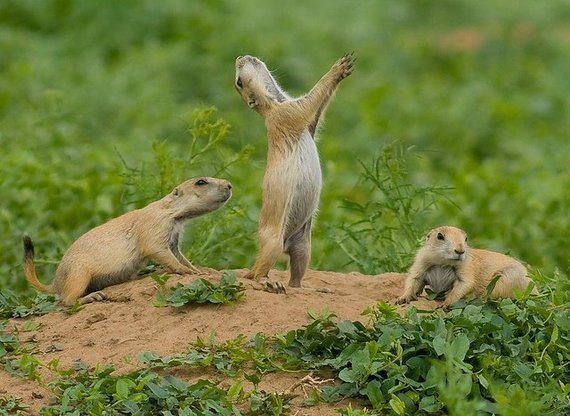How to Help Birds and Wildlife This Spring
It’s officially spring and bird migration is already underway! There are four migratory flyways birds fly in North America: the Atlantic, Mississippi, Central, and Pacific Flyways. These migration corridors, akin to highways in the sky, are used by birds as diverse as hummingbirds, hawks, and waterfowl journeying north in spring towards breeding grounds and south in autumn to overwintering habitat.
National wildlife refuges across the United States are beneficially located along these aerial avian travel routes (some birds fly hundreds or thousands of miles!), providing a variety of safe and healthy habitats so birds can rest, nest, eat, and drink.
You may also view migrating birds in your local community’s parks, schoolyards, or backyards. As birds begin raising young, it’s not uncommon to find abandoned (“orphaned”) baby birds. The best solution is generally to leave the bird alone, although you may consider contacting a licensed wildlife rehabilitator who is properly trained to nurse injured wildlife back to health.
Explore additional tips for helping wildlife (and avoiding common mistakes), and discover how to prevent wildlife-window collisions, which kill nearly 300 million birds annually. These tragic losses can be reduced by using bird-friendly lighting, building design, and window treatments.
Jump-yip, hooray!

The Secret Science of Prairie Dog Communication
Prairie dogs are highly intelligent mammals. Scientists are just beginning to decipher the meaning of their complex language and behaviors, such as the characteristic “jump-yip” routine seen in black-tailed prairie dogs. Why do they do it? The behavior appears to be used for communicating with – and assessing the level of alertness of – other nearby prairie dogs. This information could inform them about how much to keep up their guard while foraging for food.
There are five prairie dog species and all are found only in North America: black-tailed, white-tailed, Gunnison’s, Utah, and Mexican prairie dogs. These stout, ground-dwelling rodents are sometimes considered pests. Yet they’re also recognized as influential “ecosystem engineers” and keystone species that significantly affect their surrounding environment in important ways.
Prairie dog populations are tied to the health of many other western wildlife species. One species that benefits from prairie dogs is the black-footed ferret, North America’s rarest land mammal, which depends on prairie dogs for 90% of its diet. This charismatic carnivore also relys on prairie dog burrows for shelter. Burrowing owls use prairie dog burrows too!
Did You Know?
 |
Comeback for Humpback Chub
The humpback chub is making a comeback! A recent 5-year status review indicates this unique Colorado River fish could soon be downlisted from an endangered to a threatened species. This would mark a conservation success for the native freshwater fish, which has been protected since 1967 (predating the Endangered Species Act of 1973). The largest population, found in the Colorado and Little Colorado Rivers in the Grand Canyon of Arizona, appears to be stable at about 12,000 adults. There are five populations in total, each persisting without hatchery stocking. Improvements in water management, nonnative fish control, and collaborative conservation efforts with state, tribal, federal, and private partners are all attributed to helping the humpback chub, ensuring it continues to endure for future generations. Photo: Humpback chub by Travis Francis/USFWS |





